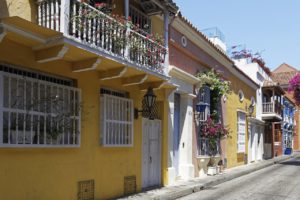El Día del Niño: Celebrating Children Across Latin America and Beyond on Children’s Day
Every year, many countries across Latin America and other parts of the world celebrate el Día del Niño (Children’s Day). This is a joyful occasion dedicated to honoring and recognizing the importance of childhood. More than just a fun holiday for kids, it’s also a time to advocate for children’s rights and well-being. While the date and customs vary by country, the spirit of the celebration remains the same: to make children feel special, valued, and loved.
Origins and History of el Día del Niño
The concept of a children’s day began internationally in 1925 during the World Conference on the Welfare of Children in Geneva. The idea gained momentum when the United Nations established Universal Children’s Day on November 20. The purpose was to promote children’s rights and to mark the date the Declaration of the Rights of the Child was adopted.
However, many countries in Latin America have chosen their own dates and traditions. For example:
- Mexico celebrates Día del Niño on April 30.
- Colombia observes it on the last Saturday of April.
- Argentina celebrates Día de las Infancias in August.
- Chile also marks it in August, now as Día de las Niñas y los Niños.
- Peru celebrates on the third Sunday of August.
- Venezuela on the third Sunday of July.
- Paraguay uniquely marks it on August 16 in memory of the tragic Battle of Acosta Ñu, where many children died during the War of the Triple Alliance.
Common Celebrations of Día del Niño
Celebrations vary from country to country, but there are also common events. For example, schools throughout Latin American hold festivities. Many organize actividades especiales (special activities) like juegos (games), obras de teatro (plays), manualidades (crafts), and convivios (classroom parties). Students may receive small regalos (gifts), dulces (candies), or globos (balloons).
There are also public events. Cities and towns may hold festivales or eventos comunitarios (festivals and community events) featuring payasos (clowns), música en vivo (live music), or actividades al aire libre (outdoor activities). Museums, zoos, and amusement parks often offer entrada gratuita (free admission) or discounts for kids.
And of course, the holiday also includes family time. Parents and relatives often plan special salidas (outings) or cook favorite meals for their children. Common treats include pastel (cake), helado (ice cream), and local snacks.
Regional Traditions and Highlights of Día del Niño
In Mexico, ¡Feliz Día del Niño! is a common greeting. Schools go all out with decorations, talent shows, and piñatas. In some towns, children even “take over” city halls in symbolic activities to raise awareness of children’s voices.
In Colombia, the day is used not only for fun but also for educational campaigns about los derechos de los niños (children’s rights). The day emphasizes themes like respect, inclusion, and love.
In Paraguay, the day is solemn and patriotic, remembering the children who fought and died in the Guerra de la Triple Alianza. This war began in 1864 and continued to 1870, between Paraguay and the triple alliance of Argentina, Uruguay, and the Empire of Brazil. This was the bloodiest inter-state war in Latin American history. Though people still celebrate Children’s Day with fun activities, it is also a moment of reflection.
In Argentina, the term was officially changed from Día del Niño to Día de las Infancias in 2020 to reflect a more inclusive vision of childhood. The day often includes cuentacuentos (story-telling sessions) and public campaigns on the importance of el juego (play) and el afecto (affection).
¡Feliz Día del Niño!
Children’s Day includes laughter-filled parties, meaningful public events, and simple gestures of love at home. El Día del Niño is a cherished reminder to nurture and honor the youngest members of society. It’s a day not just of celebration, but of hope for a brighter, kinder future led by today’s children.
Get on the road to speaking Spanish with the Language Garage!
We hope you’ve enjoyed learning about el Día del Niño, or Children’s Day. If you’d like to learn more:
- Follow us on Facebook, LinkedIn, BlueSky, Twitter, Threads, Mastodon, Instagram, or Pinterest. We publish lots of Spanish vocabulary, grammar, and culture notes, so it’s a great way to pick up some new vocabulary and practice.
- Check out our other posts on Spanish language, culture, and more.
- Enroll in affordable, flexible, and personalized private online Spanish lessons or sign up for a small group online Spanish class.
- Create a free Language Garage account to access tons of Spanish vocabulary, grammar, and culture.
Photo by yorchllavadu on Pexels






